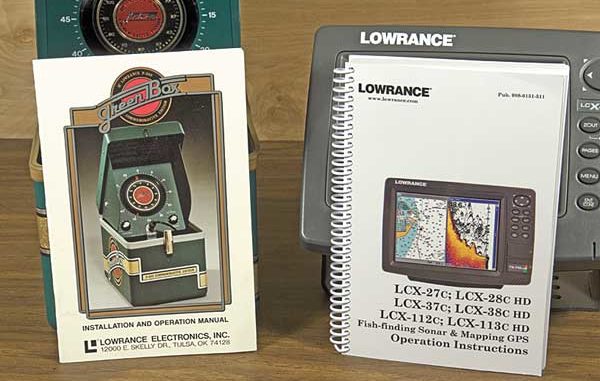
Fish these Lafitte hotspots in March, and your arm will feel like you just spent six hours on your Bowflex.
If there is anything worse than a complicated sounder or chart plotter, it’s an owner’s manual that doesn’t give you the traction to climb the unit’s learning curve. My least favorite manuals over the years were written in another language and then poorly translated into English. Some of them would have been funny if the ability to use the unit they came with didn’t depend on understanding their butchered text.
My next least favorite type of manual is just as difficult to understand for another reason: It reads like it was written by engineers for other engineers, and I hate having to stop and decipher technical terms and abbreviations several times per paragraph.
Thankfully, it has been years since I have opened a new unit’s box and found a manual that fit either category.
Today’s manuals are nearly all written in English with wording that is only as technical as necessary. I am still intimidated by the thickness of some manuals, but helping users understand how to get the most out of every feature crammed into the current generation of computerized electronics takes a lot of pages.
Units that can be networked with other electronics and connected to a variety of sensors sometimes come with separate installation guides that are about the same size as their owner’s manuals. Gone are the days when units had only two rotary knobs, and a fold-out pamphlet could explain everything you could do with them.
A good owner’s manual is a great help when installing a new unit. Wiring diagrams help you power the unit and hook up any network components correctly the first time. Some fish-finder manuals include a printed transducer mounting bracket template that helps you position the bracket in just the right spot on the transom before you drill the first hole.
Most manuals also include a trouble-shooting section that can help you fix simple problems and save you the trouble of having to call customer service.
Some manuals have easy-to-understand sections that explain how sonar and/or GPS work and provide tips on tweaking controls and features to get the most out of them in real, on-the-water situations. Users who want to go beyond automatic operation will find these sections invaluable.
When testing or evaluating a new unit, the first thing I do is slip the owner’s manual in a waterproof plastic bag and put it where I won’t forget it when I head for the lake. I spend half of the first test day on the water with the manual open in my lap while I learn to set up and use the unit’s basic features. I won’t remember much if I just sit in an easy chair at home and read the manual; I need to be able to press the buttons and watch their effect on the screen while sitting over real fishing water.
Little things that you might not pick up on unless you study the manual can make a big difference in your fishing success and boost the accuracy of your navigation. Two such things are selecting a different screen background color to increase visibility as light conditions change, and learning how to switch quickly between the windows on a split-screen display to adjust each one separately. You’ll find dozens more “little things” worth learning in your owner’s manual.
I keep the book in reach even after I feel like I have a handle on operating a new unit. The more I use its features on the water, the easier it gets to spot, understand and use more subtle benefits covered in the manual. I simply won’t leave home without it.


